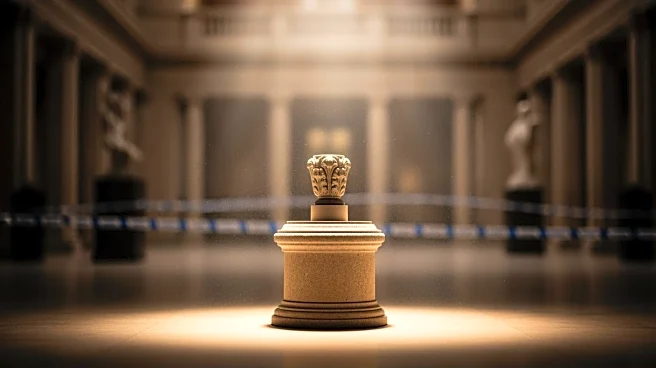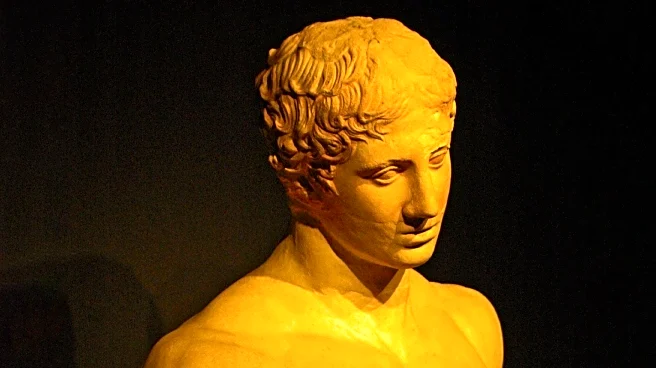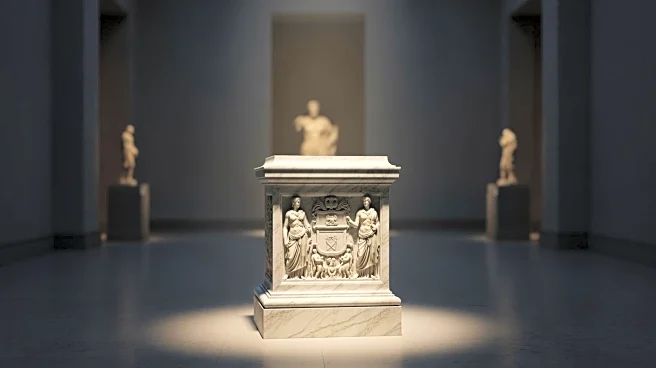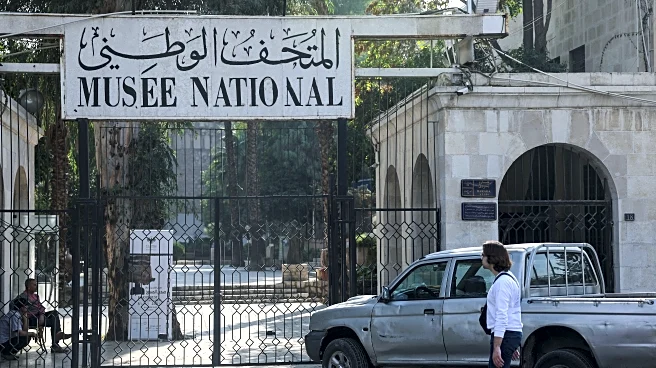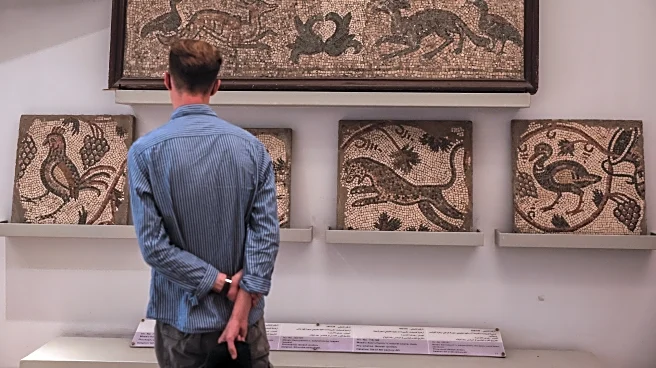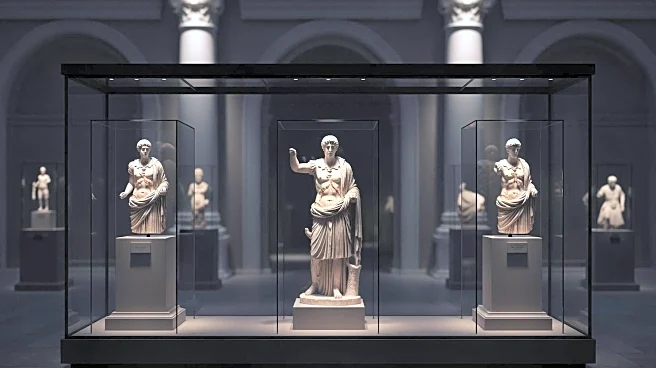What's Happening?
A significant theft occurred at Syria's National Museum in Damascus, where six Roman-era statues and several gold ingots were stolen. The incident was discovered on Monday morning after a door was found
broken. The Directorate General of Antiquities and Museums, along with Syria's Ministry of Culture, confirmed the theft and launched an investigation. However, details about the stolen items and the investigation's progress remain scarce, leading to calls for greater transparency. The stolen artifacts include nude marble statues of the goddess Venus, which were briefly identified by Syria Now and the Ministry of Culture before the posts were deleted. This theft follows similar incidents at other major museums, raising concerns about security measures and the motives behind such thefts.
Why It's Important?
The theft of culturally significant artifacts from Syria's National Museum highlights ongoing challenges in protecting heritage sites, especially in regions affected by conflict. The loss of these items represents not only a cultural setback but also raises questions about the adequacy of security measures in place. The incident underscores the vulnerability of cultural institutions in conflict zones and the need for international support to safeguard such treasures. The theft could have implications for the art market, potentially fueling illegal trade in stolen artifacts. It also places pressure on Syrian authorities to improve transparency and security to prevent future incidents.
What's Next?
The investigation into the theft is ongoing, with Syrian authorities facing pressure to provide more information and ensure the recovery of the stolen artifacts. International organizations like UNESCO may play a role in supporting security enhancements at the museum. The incident may prompt other museums worldwide to reassess their security protocols, especially those in regions with political instability. The art community and cultural heritage organizations are likely to advocate for stronger measures to protect vulnerable sites and prevent the illicit trade of stolen artifacts.
Beyond the Headlines
The theft raises ethical and legal questions about the protection of cultural heritage in conflict zones. It highlights the need for international cooperation to address the challenges of preserving history and culture amidst political turmoil. The incident may lead to increased scrutiny of the art market and efforts to curb the sale of stolen artifacts. Long-term, it could influence policies on cultural heritage protection and the role of international bodies in safeguarding historical sites.
